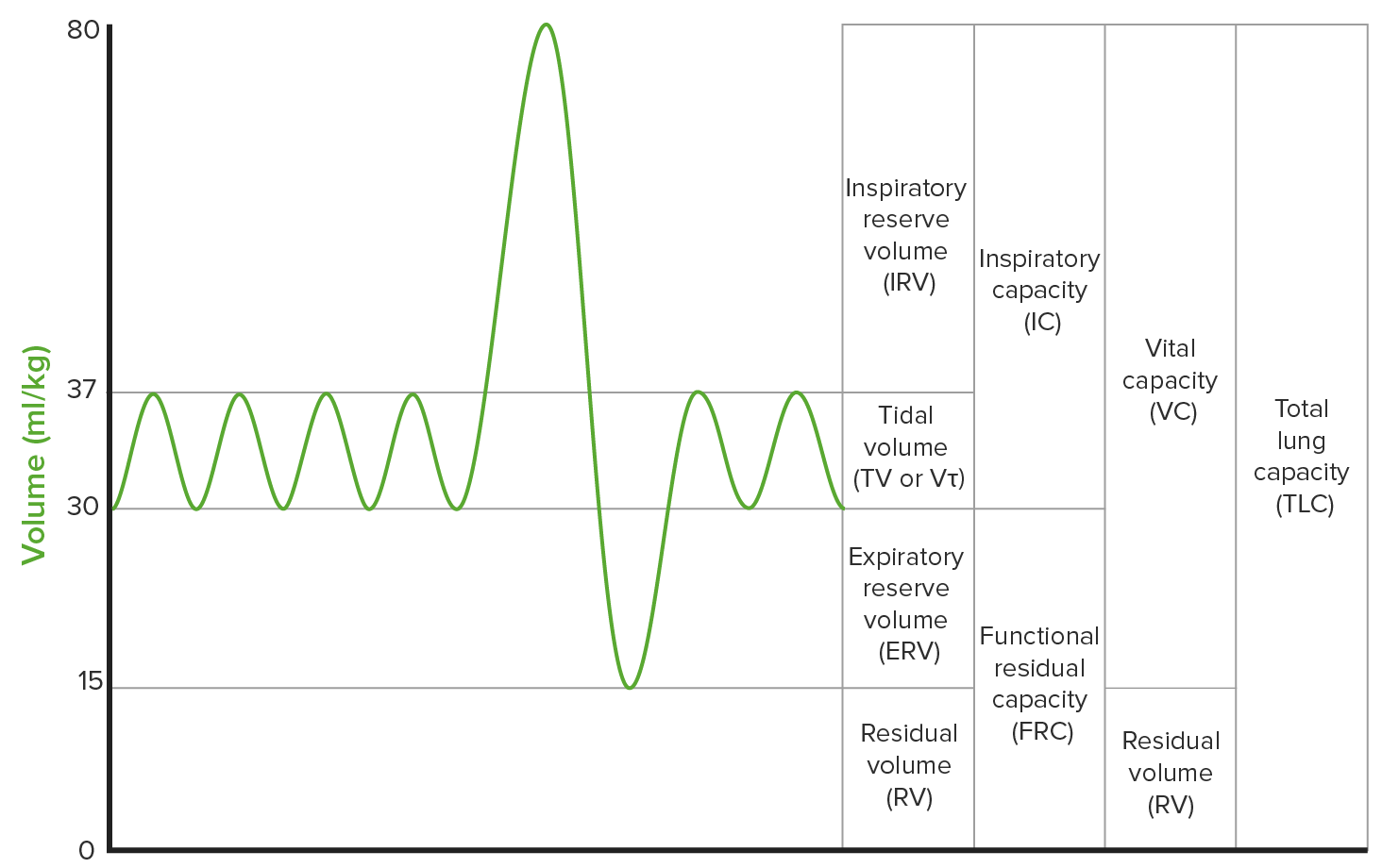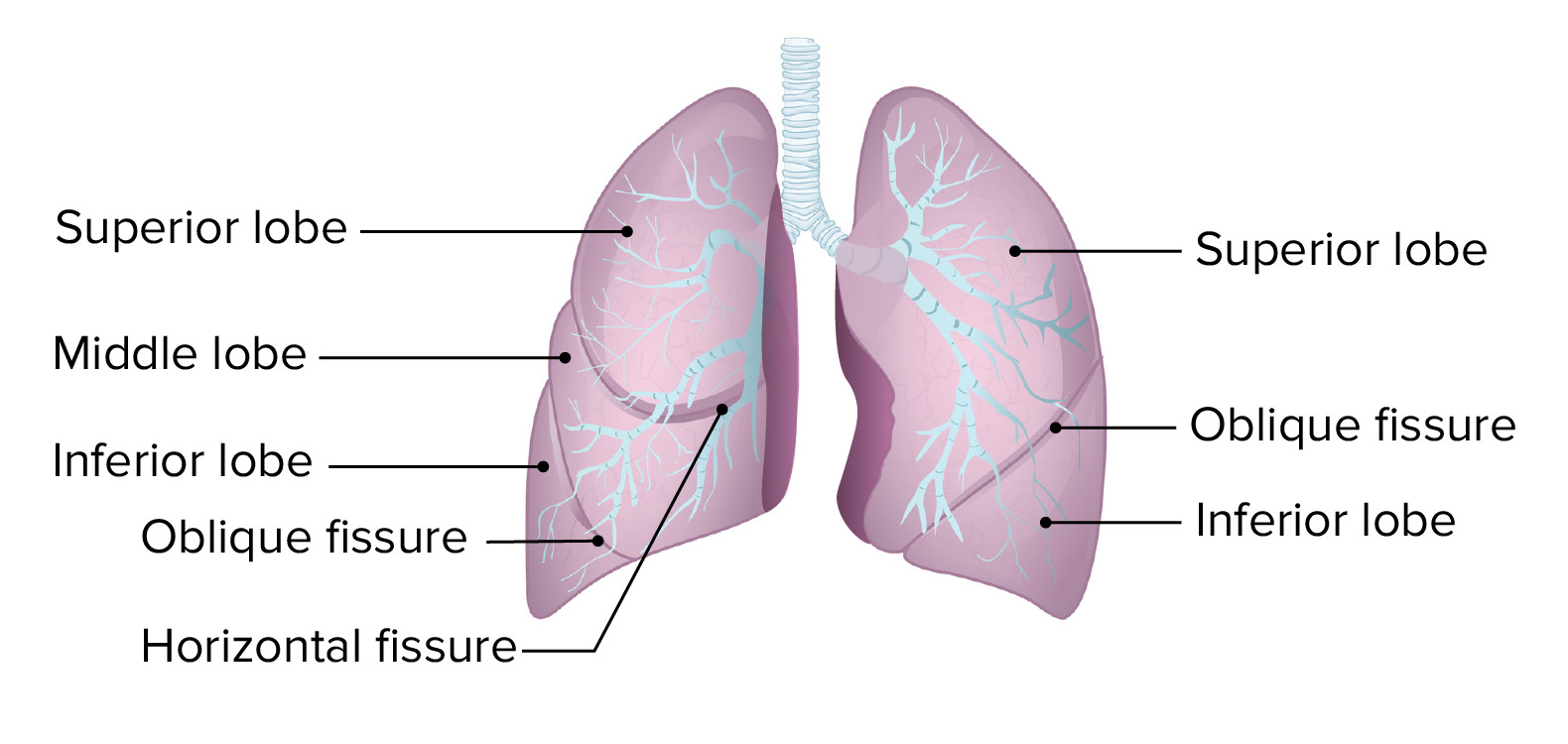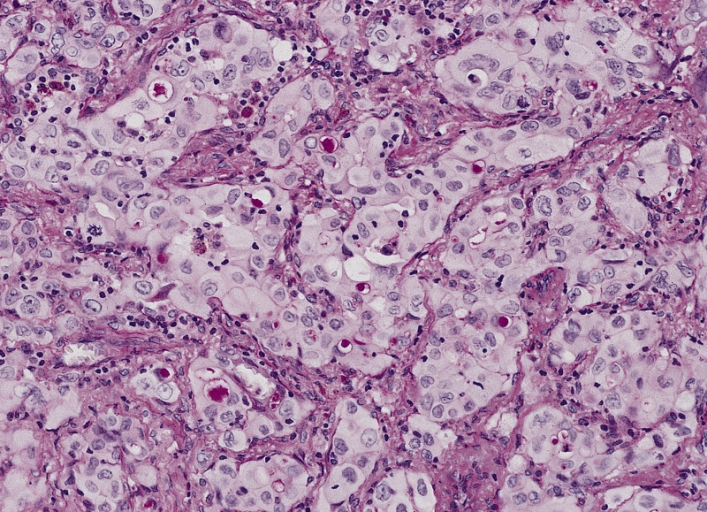Playlist
Show Playlist
Hide Playlist
Lung Nodules and Cancer
-
Slides PulmonaryNeoplasia RespiratoryPathology.pdf
-
Download Lecture Overview
00:02 Etiologies, some of the benign etiologies include granuloma from a previous maybe fungal infection. The most common systemic fungus, Histoplasma. Hamartomas and slowly resolving local pneumonias. Hamartomas are a big one. What’s a hamartoma? A benign lesion and it is overgrowth of the cell, but it’s indigenous to that organ, correct? Whereas if it was more ectopic, what do you call that? You call that a heterotopic rest or you call that a choristoma. Keep that in mind. You know, your exams and boards love such questions. Benign. 00:40 Clinical presentation, incidental findings is benign lesions, asymptomatic. Diagnosis? Biopsy. Well, watch and wait, and hopefully that’s good enough. 00:52 Lung nodules and cancer. We’ll take a look at that. Which favours benign and that which favours malignancy. Pretty much, what we’ve already kind of talked about. 01:00 If it’s benign, no growth. Malignancy, Increased proliferation. Benign, less than 1 cm. Malignant, larger. 01:10 Benign, calcified. Malignancy, we have what’s known as spiculated calcification. 01:16 It looks like the nodule, but then it looks like there’s spicules coming out from it and that’s not good. Or even non-calcified lesion. 01:24 Benign, non-smoker. One big exception? Good, adenocarcinoma. Smoker, many of them. 01:32 Including small or squamous. 01:34 Benign, no associated pleural effusion. If it’s malignant, we talked about it being? Good, haemorrhagic like, invading chest wall. 01:44 Benign, not glucose avid on PET scan. What does that mean? Big time. Positive emission tomography. This revolutionised the way in which we handle cancers and how we interpret it. Cancer, as we talked about earlier, favours a particular type of pathway in biochemistry and it’s not anaerobic, it’s not aerobic, it’s right in the middle. It’s called Warburg. Amazing. Even if that cancer is accepting, we had this discussion earlier, let us now bring it up one more time. This cancer, even if it is receiving and it’s being supplied by proper amounts of blood, still wishes and prefers tocreate quite or to undergo quite a bit of fermentation. So therefore, there’s going to be increased lactate dehydrogenase activity. That’s a seriously malignant issue. If it’s a benign ideology, the Warburg effect, the Warburg pathway is not the way that it goes and therefore in terms its consumption of glucose, its consumption and really the production of lactate dehydrogenase is just not going to be there. So, your PET scan is going to be negative for benign. That’s huge for us. If it’s positive, you’re thinking about malignancy.
About the Lecture
The lecture Lung Nodules and Cancer by Carlo Raj, MD is from the course Lung Cancer .
Included Quiz Questions
Which of the following does NOT occur in Horner syndrome?
- Histamine release
- Decreased sympathetic output
- Ptosis
- Anhydrosis
- Miosis
Which nerve when compressed produces the symptom of hoarseness?
- Recurrent laryngeal nerve
- Pharyngeal nerve
- Hypoglossal nerve
- Glossopharyngeal nerve
- Superior laryngeal nerve
What complication of lung nodules is responsible for isolated flushing of the face and upper extremities?
- Compression of the superior vena cava
- Compression of branches of the vagus nerve
- Superimposed infection resulting in hyperthermia
- Paraneoplastic syndrome resulting in excessive serotonin release
- Compression of the sympathetic chain
Which of the following characteristics of a solitary nodule would increase the likelihood of benign pathology?
- Calcified lesion
- Hemorrhagic pleural effusion
- Older patient
- Eccentric calcifications
- Glucose avid on PET
Customer reviews
4,7 of 5 stars
| 5 Stars |
|
2 |
| 4 Stars |
|
1 |
| 3 Stars |
|
0 |
| 2 Stars |
|
0 |
| 1 Star |
|
0 |
Professor Raj is very clear in explanation and he kept my attention constantly high. Lung cancer is one of the most difficult subject to study and he helped me to keep important concept in order in my mind. Thank you.
Excellent, in depth but simple. Keep up the good work, Dr Raj
Good one. More pictorial would be necessary for better understanding.






